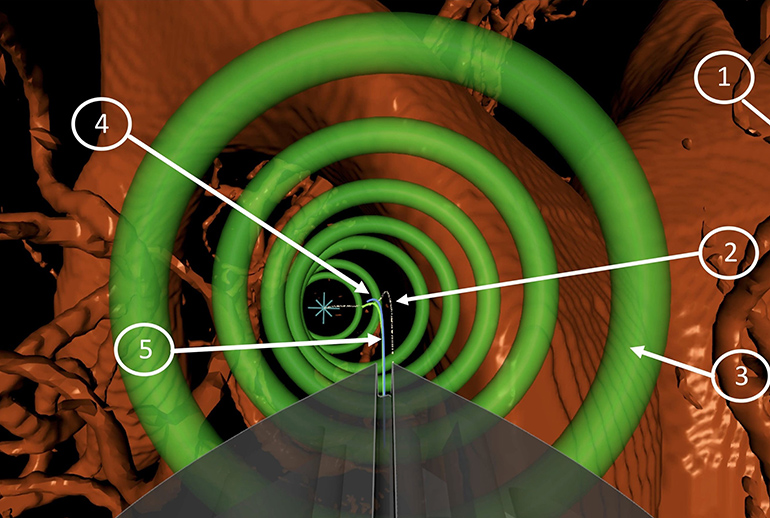Researchers at Imperial College London in the UK have developed a flexible catheter system that is designed to enable access and treatment of the deep areas of the brain. At present, catheters intended for such applications can suffer from rigidity, making it difficult to access the brain safely and effectively. This latest technology includes a robotic arm that steers the catheter through the brain.

The robotic arm is partially controlled by artificial intelligence and partly maneuvered by the surgeon, allowing for highly sensitive movements. The catheter itself consists of four interlocking components that can slide over each other, allowing for flexible movement. This flexible mechanism is inspired by the anatomical structure used by parasitic wasps to lay eggs in tree bark.
Achieving minimally invasive access to the brain is crucial for effective treatment of a wide variety of conditions. At present, catheter systems that allow access to the brain come with some disadvantages, of which the primary issue is their lack of flexibility. This can make it difficult to advance the catheter to the area it is required and risks damaging delicate brain tissue.

“One of the key limitations of current minimally invasive surgery is that if you want to get to a deep-seated site through a burr hole in the skull, you are constrained to a straight-line trajectory,” said Lorenzo Bello, a researcher involved in the study. “The limitation of the rigid catheter is its accuracy within the shifting tissues of the brain, and the tissue deformation it can cause. We have now found that our steerable catheter can overcome most of these limitations.”
To address this, these researchers have developed a flexible catheter that takes inspiration from the organ used by certain species of parasitic wasps to lay eggs in tree bark. This organ consists of interlocking parts that can slide over each other, and the researchers used a very similar design to create a flexible catheter. The other important component of the system is a robotic arm that uses AI to help the surgeon to navigate very precisely through the brain. Optical fibers that run along the catheter let the surgeons visualize the brain tissue during surgery.

“The brain is a fragile, complex web of tightly packed nerve cells that each have their part to play,” said Ferdinando Rodriguez y Baena, another researcher involved in the study. “When disease arises, we want to be able to navigate this delicate environment to precisely target those areas without harming healthy cells. Our new precise, minimally invasive platform improves on currently available technology and could enhance our ability to safely and effectively diagnose and treat diseases in people, if proven to be safe and effective.”
Study in PLOS ONE: Modular robotic platform for precision neurosurgery with a bio-inspired needle: System overview and first in-vivo deployment
